My Contributions
- Project Management: Coordinated the game design team to ensure cohesive development.
- Combat System Design: Developed the spell-craft combat mechanics, balancing challenge and player agency.
- Level Design: Crafted environments optimized for a 2.5D camera perspective, ensuring intuitive navigation and guiding players through puzzles and dark areas without confusion.
- Narrative and Gameplay Balancing: Separated investigation and combat, expanded tutorials, and integrating guiding voice lines to ease player learning and immersion.
Spell-Craft Combat System
The combat system is inspired by Taoist rituals, specifically the Wuxing (Five Elements), transforming traditional practices into dynamic gameplay.

Materials and Spells:
Materials are categorized as standard and ghost-dropped:
- Standard materials: Basic functionality, often requiring combinations.
- Ghost-dropped materials: Powerful on their own, adding unique advantages.
Materials are categorized as standard and ghost-dropped:
- Standard materials: Basic functionality, often requiring combinations.
- Ghost-dropped materials: Powerful on their own, adding unique advantages.

Craft Spells:
Players collect materials from levels or defeated enemies, and combine one or two to craft spells with distinct effects.
Example:
- Copper nail: Stuns enemies.
- Matchstick: Gathers materials.
- Copper nail + Matchstick: Creates a damaging spell.
Players collect materials from levels or defeated enemies, and combine one or two to craft spells with distinct effects.
Example:
- Copper nail: Stuns enemies.
- Matchstick: Gathers materials.
- Copper nail + Matchstick: Creates a damaging spell.

Core Gameplay Loop:
1.Collection: Gather materials from the environment and defeated enemies.
2.Experimentation: Combine materials to discover new spells.
3.Execution: Use crafted spells to defeat enemies and gather more resources.
1.Collection: Gather materials from the environment and defeated enemies.
2.Experimentation: Combine materials to discover new spells.
3.Execution: Use crafted spells to defeat enemies and gather more resources.

First Build
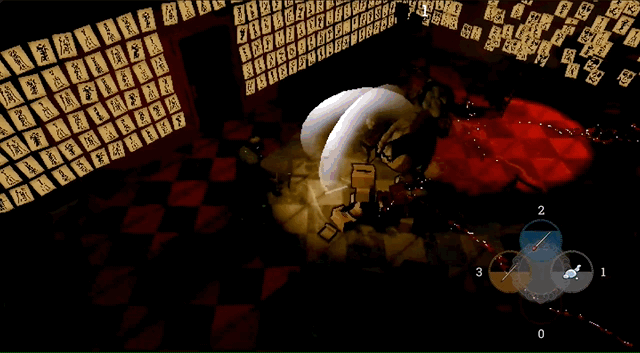
Final Build
Four Main Iterations:
1. Enhanced Material Combinations: Improved accessibility and clarity, empowering players to make informed decisions when crafting spells.
2. Automatic Material Collection: Players now automatically pick up ghost-dropped materials, streamlining resource management.
3. Auto-Aim Feature: Introduced to improve combat precision and reduce frustration during engagements.
4. Balanced Movement Speeds: Reduced player speed to discourage frequent escapes while moderating enemy speed to give players time to strategize.
1. Enhanced Material Combinations: Improved accessibility and clarity, empowering players to make informed decisions when crafting spells.
2. Automatic Material Collection: Players now automatically pick up ghost-dropped materials, streamlining resource management.
3. Auto-Aim Feature: Introduced to improve combat precision and reduce frustration during engagements.
4. Balanced Movement Speeds: Reduced player speed to discourage frequent escapes while moderating enemy speed to give players time to strategize.
Level Design


1. Initial Layout:
- Started with a linear layout, focusing on straightforward player progression for prototyping.
- This approach prioritized clarity but lacked depth in exploration and player agency.
- Started with a linear layout, focusing on straightforward player progression for prototyping.
- This approach prioritized clarity but lacked depth in exploration and player agency.

2. Iterated Layout :
- Transitioned into a basic circular layout, introducing loops and connections to improve navigation and replayability.
- Early attempts at encouraging exploration and dynamic player routes.
- Transitioned into a basic circular layout, introducing loops and connections to improve navigation and replayability.
- Early attempts at encouraging exploration and dynamic player routes.

3. Final Implementation:
- Further refined the circular layout to include logical connections and distinct zones for puzzles, combat, and exploration.
- Improved navigation flow and introduced multiple pathways for greater player freedom and strategic gameplay.
- Added environmental storytelling, puzzles, check points and intuitive lighting to guide players seamlessly through the level.
- Further refined the circular layout to include logical connections and distinct zones for puzzles, combat, and exploration.
- Improved navigation flow and introduced multiple pathways for greater player freedom and strategic gameplay.
- Added environmental storytelling, puzzles, check points and intuitive lighting to guide players seamlessly through the level.
Balancing Combat and Narrative
Players found the combat system engaging but struggled with its complexity in single sessions, especially under the pressures of intense horror ambience.

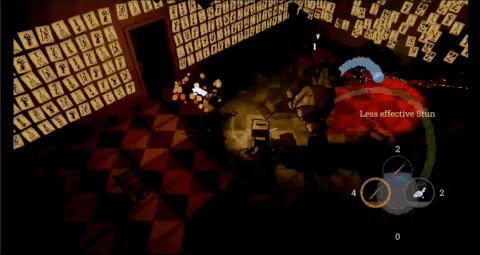
From Tutorial to Boss Fight
Key Adjustments:
1. Gradual introduction of mechanics with repeated reinforcement.
2. Expanded combat tutorials for better player understanding.
3. Added guiding non-diegetic voice lines for a cohesive learning experience.
1. Gradual introduction of mechanics with repeated reinforcement.
2. Expanded combat tutorials for better player understanding.
3. Added guiding non-diegetic voice lines for a cohesive learning experience.
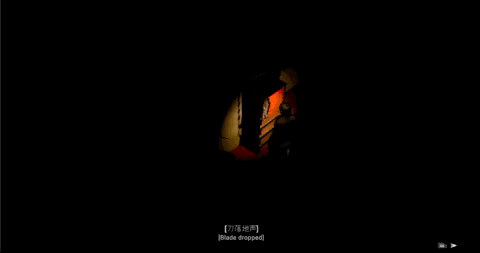

Isolated Narrative Experience from Combat
4. Separated combat and investigation to reduce cognitive load.
5. Retained key narrative moments, like investigating Lord Guan’s Knife, to anchor the story.
5. Retained key narrative moments, like investigating Lord Guan’s Knife, to anchor the story.
Other Systems
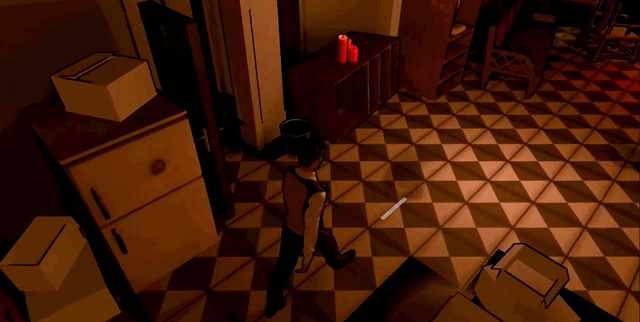
First Build

Final Build
Player Perspective
In later builds, we adopted a more isometric camera perspective for players. This viewpoint offers a broader visual range on the screen, enhancing player performance in combat scenarios.
In later builds, we adopted a more isometric camera perspective for players. This viewpoint offers a broader visual range on the screen, enhancing player performance in combat scenarios.
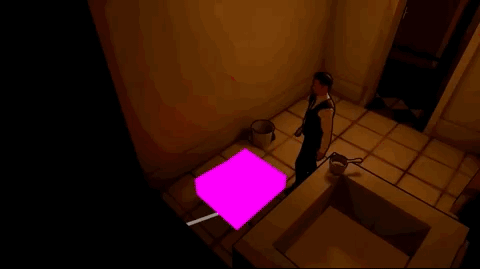
Removed Dialogue Selection
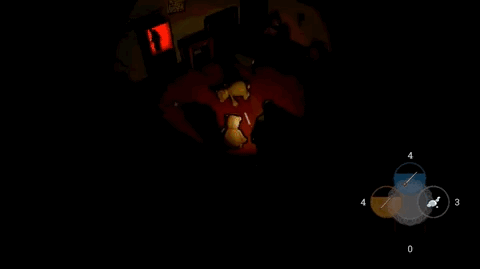
“Police Sense”
Narrative System Iteration
- Removed the dialogue selection system to improve game pacing, as it didn’t fit well in the vertical slice format.
- Replaced proximity-based object highlighting with a “police sense” mechanic, inspired by the “Witcher sense” in Witcher 3.
- Removed the dialogue selection system to improve game pacing, as it didn’t fit well in the vertical slice format.
- Replaced proximity-based object highlighting with a “police sense” mechanic, inspired by the “Witcher sense” in Witcher 3.